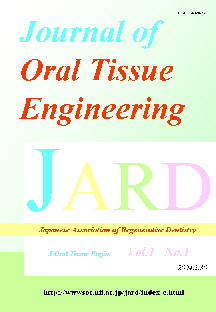2 巻, 2 号
選択された号の論文の6件中1~6を表示しています
- |<
- <
- 1
- >
- >|
MINI REVIEW
-
2005 年 2 巻 2 号 p. 51-59
発行日: 2005年
公開日: 2006/03/02
PDF形式でダウンロード (1944K)
ORIGINAL ARTICLES
-
2005 年 2 巻 2 号 p. 60-65
発行日: 2005年
公開日: 2006/03/02
PDF形式でダウンロード (1783K) -
2005 年 2 巻 2 号 p. 66-75
発行日: 2005年
公開日: 2006/03/02
PDF形式でダウンロード (3095K) -
2005 年 2 巻 2 号 p. 76-80
発行日: 2005年
公開日: 2006/03/02
PDF形式でダウンロード (558K) -
2005 年 2 巻 2 号 p. 81-85
発行日: 2005年
公開日: 2006/03/02
PDF形式でダウンロード (963K) -
2005 年 2 巻 2 号 p. 86-91
発行日: 2005年
公開日: 2006/03/02
PDF形式でダウンロード (1804K)
- |<
- <
- 1
- >
- >|
